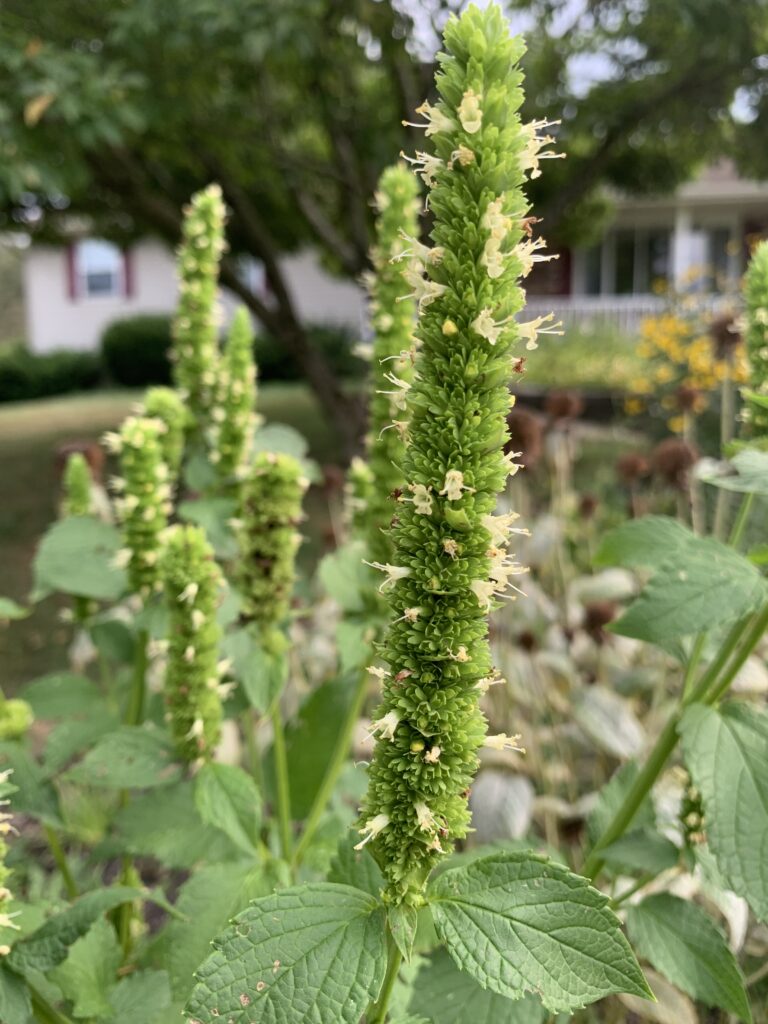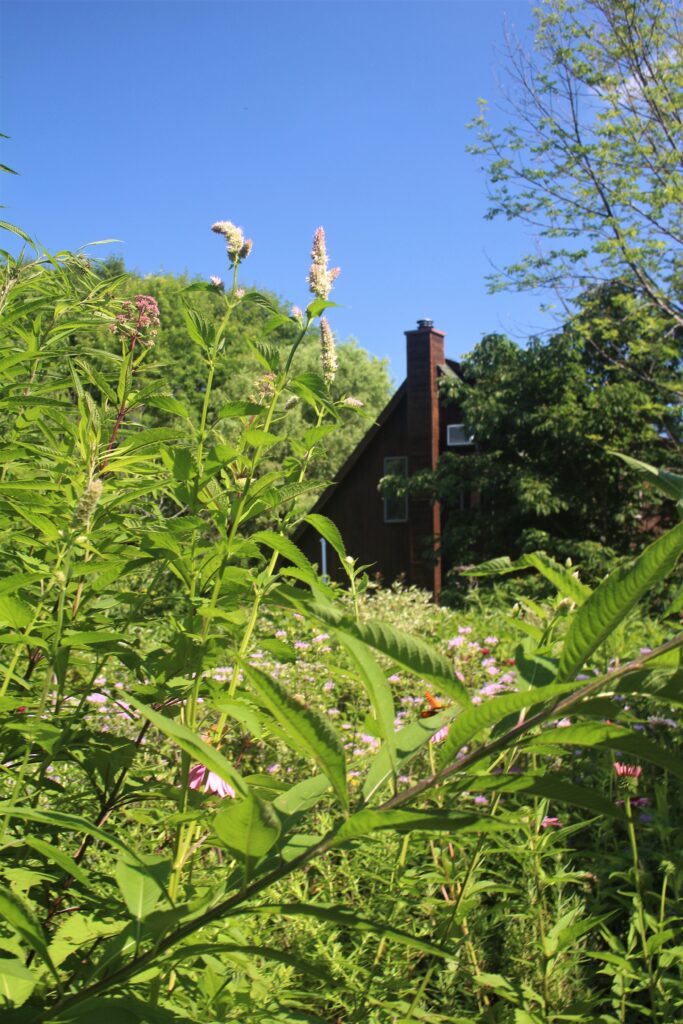
Hyssop is a popular plant to attract pollinators to their garden. However, the native Giant Yellow Hyssop is considered endangered here in New York. If you are looking to attract butterflies and hummingbirds to your garden then this is a must-have. Another great perk is that this one is deer resistant.
Growing Conditions
Place the Giant Yellow Hyssop in a sunny spot as an architectural statement as it reaches 6-7 feet in height. Tolerates up to part shade but may not reach the same height. Make sure the area has good drainage as well but other than that will grow in just about any type of soil.
The Plant
While many people use the plant for tea, Native Americans used the plant to create a poultice to relieve the itch from poison ivy rash. Some have found success in using in cut and dried floral arrangements. Just remember when harvesting leaves start from the bottom of the stalk, work your way up, and leave at least 60% of the plant. Remember that our pollinators and other wild life use all parts of the plant so the more you leave the more you will see of them.
Bloom
While the soft yellow/cream blooms often go unnoticed the bloom head is still a striking spike to add a new texture to your garden. Unlike most mint family members, this bloom lacks the minty fragrance. Holds blooms for one to two months in the fall, often lasting until the first frost. This is a great option for those providing nectar for migrating wildlife, such as the Monarch Butterfly.

Propagation
Harvesting the seeds should happen once the flower spike has turned brown. Threshing is the best method to remove the seed from the spike, but shaking into a container can work as well. Seeds develop and release from the head at different rates, so repeat the process over the course of a few days. When growing from seed, a cold stratification process is needed by direct sowing in the fall or recreating the conditions for at least 60 days.
Wild Ones Membership
Wild Ones Capital Region New York is a chapter of Wild Ones a national organization promoting the use of native plants in the garden. Membership is a great way to support this mission on both a local and national level. Check out membership.wildones.org for more details including all the great benefits you will receive as a member. Our local chapter works diligently to provide specific information about our local native plants. This includes not only this blog but also handing out materials when we are out in the community. Even if you are a Wild Ones member, please consider donating directly to our chapter.
